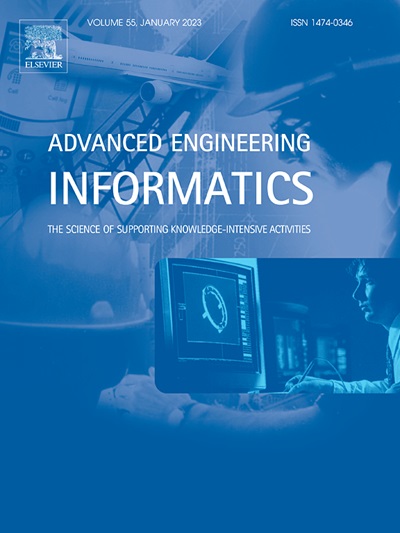Enhancing PCB assemblies reliability: An adaptive CatBoost-MOA approach integrated with Hu-Washizu variational principle for fatigue life prediction
IF 9.9
1区 工程技术
Q1 COMPUTER SCIENCE, ARTIFICIAL INTELLIGENCE
引用次数: 0
Abstract
Fatigue life prediction is crucial in ensuring the reliability and longevity of electronic components, particularly in high-stakes industries such as aerospace and defence, where premature failures can lead to catastrophic consequences, safety risks, and high operational costs. The current research introduces a novel adaptive model for predicting the fatigue lifetime of printed circuit board assemblies (PCBAs) under vibrational loading conditions. The model integrates adaptive versions of the Categorical Boosting (CatBoost) model and the Mother Optimization Algorithm (MOA) with the Hu-Washizu variational principle, addressing the limitations of conventional machine learning models by combining both data-driven and physics-informed components, improving accuracy and efficiency. The adaptive CatBoost-MOA-HuWashizu model significantly outperforms traditional methods, achieving a coefficient of determination (R2) of 0.9982 and a mean absolute percentage error (MAPE) of 0.0832 for single-component PCBs, and an R2 of 0.9839 and MAPE of 0.0995 for multicomponent PCBs, demonstrating superior predictive capability for non-linear degradation behaviours under vibrational loading conditions. The integration of MOA optimises hyperparameters by balancing exploration and exploitation, reducing computational load and accelerating convergence, while the Hu-Washizu principle ensures efficient parameter tuning and resource allocation. Comparative results show reduced computational time, with faster convergence and no loss in prediction accuracy. The model’s robustness was validated through cross-validation, yielding an average R2 of 0.9001 and an average MAPE of 0.3495 for single-component PCBs, and an average R2 of 0.9084 and an average MAPE of 0.3466 for multicomponent PCBs, confirming its generalizability across varied operational scenarios. The proposed novel adaptive model achieves near-perfect alignment between predicted and numerically estimated fatigue lifetimes, with minimal residual errors. The research offers a promising solution for real-time fatigue life estimation in aerospace, defence, and related fields. Future research will expand the model’s scalability to other complex loading conditions and component types to enhance its applicability in broader reliability assessment frameworks.
提高PCB组件可靠性:结合Hu-Washizu变分原理的自适应CatBoost-MOA方法用于疲劳寿命预测
疲劳寿命预测对于确保电子元件的可靠性和寿命至关重要,特别是在航空航天和国防等高风险行业,过早失效可能导致灾难性后果、安全风险和高运营成本。本研究提出了一种新的自适应模型,用于预测印制电路板组件在振动载荷条件下的疲劳寿命。该模型集成了自适应版本的分类提升(CatBoost)模型和母亲优化算法(MOA)以及Hu-Washizu变分原理,通过结合数据驱动和物理信息组件,解决了传统机器学习模型的局限性,提高了准确性和效率。自适应CatBoost-MOA-HuWashizu模型显著优于传统方法,单组分pcb的决定系数(R2)为0.9982,平均绝对百分比误差(MAPE)为0.0832,多组分pcb的R2为0.9839,平均绝对百分比误差(MAPE)为0.0995,显示出对振动加载条件下非线性降解行为的优越预测能力。MOA的集成通过平衡探索和开发、减少计算负荷和加速收敛来优化超参数,而Hu-Washizu原则确保了高效的参数调整和资源分配。对比结果表明,该方法减少了计算时间,收敛速度快,预测精度无损失。通过交叉验证验证了该模型的稳健性,单组分pcb的平均R2为0.9001,平均MAPE为0.3495,多组分pcb的平均R2为0.9084,平均MAPE为0.3466,证实了其在不同操作场景下的通用性。提出的新型自适应模型在预测疲劳寿命和数值估计疲劳寿命之间实现了近乎完美的一致性,并且残差最小。该研究为航空航天、国防等相关领域的实时疲劳寿命估算提供了一种有前景的解决方案。未来的研究将扩展模型的可扩展性到其他复杂的加载条件和部件类型,以增强其在更广泛的可靠性评估框架中的适用性。
本文章由计算机程序翻译,如有差异,请以英文原文为准。
求助全文
约1分钟内获得全文
求助全文
来源期刊

Advanced Engineering Informatics
工程技术-工程:综合
CiteScore
12.40
自引率
18.20%
发文量
292
审稿时长
45 days
期刊介绍:
Advanced Engineering Informatics is an international Journal that solicits research papers with an emphasis on 'knowledge' and 'engineering applications'. The Journal seeks original papers that report progress in applying methods of engineering informatics. These papers should have engineering relevance and help provide a scientific base for more reliable, spontaneous, and creative engineering decision-making. Additionally, papers should demonstrate the science of supporting knowledge-intensive engineering tasks and validate the generality, power, and scalability of new methods through rigorous evaluation, preferably both qualitatively and quantitatively. Abstracting and indexing for Advanced Engineering Informatics include Science Citation Index Expanded, Scopus and INSPEC.
 求助内容:
求助内容: 应助结果提醒方式:
应助结果提醒方式:


